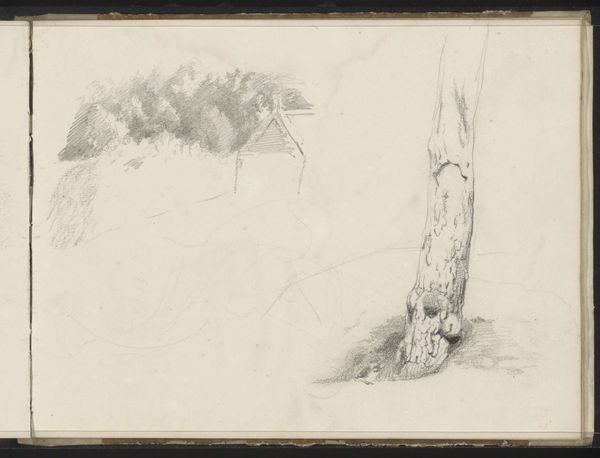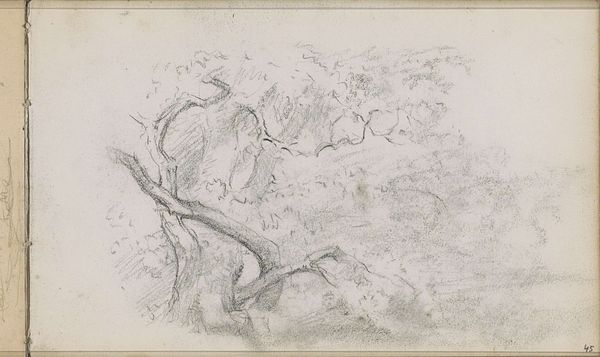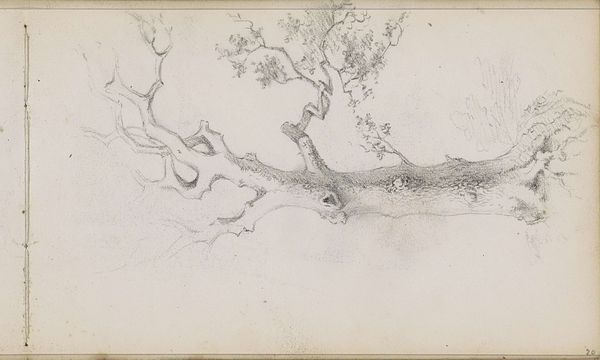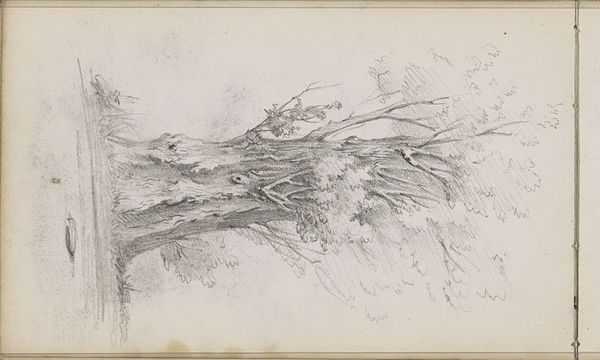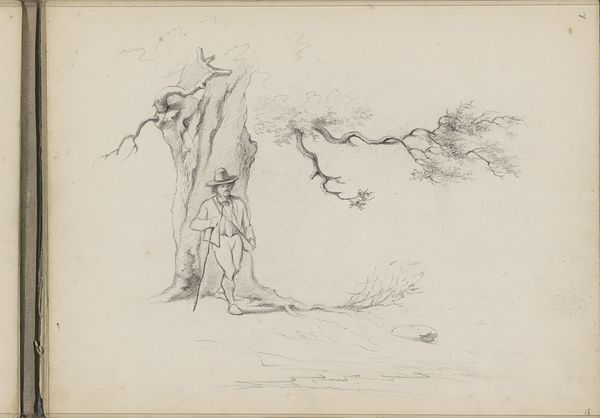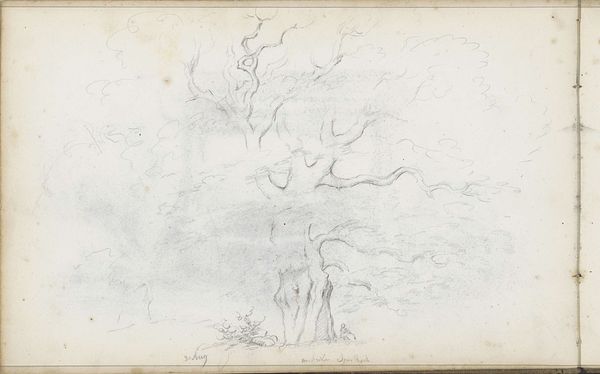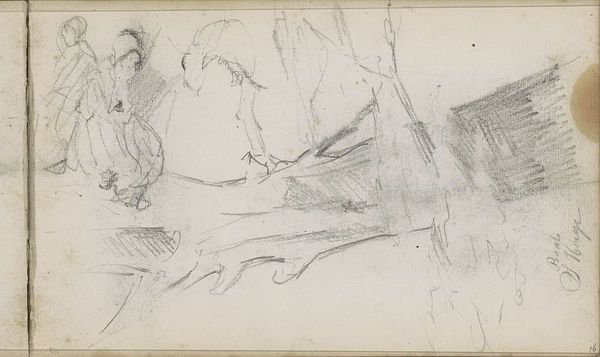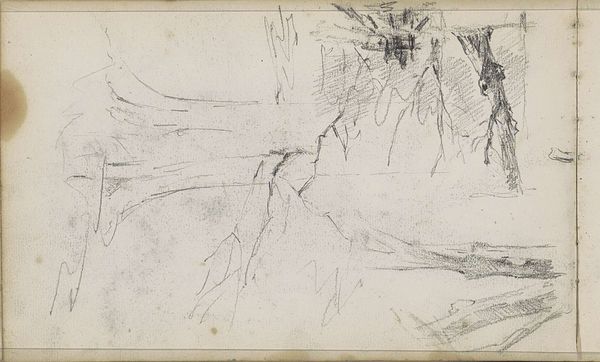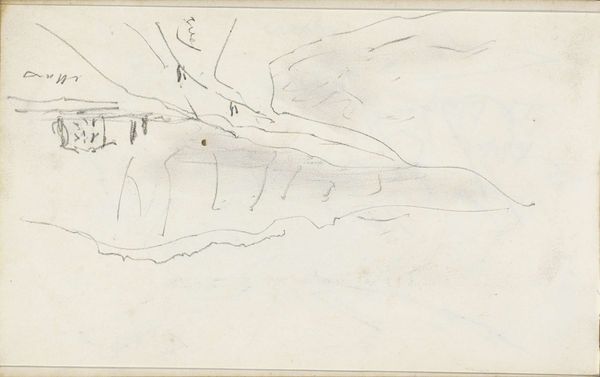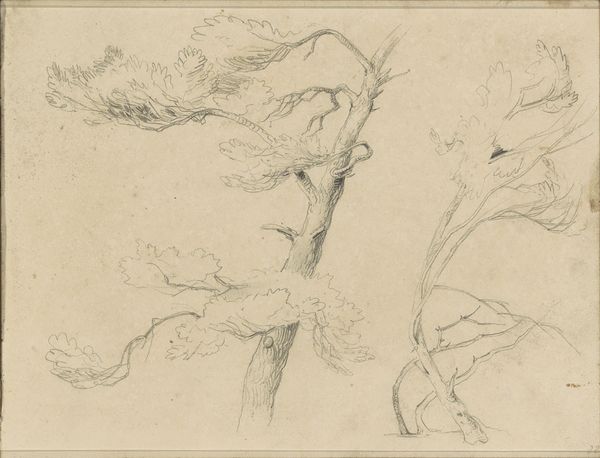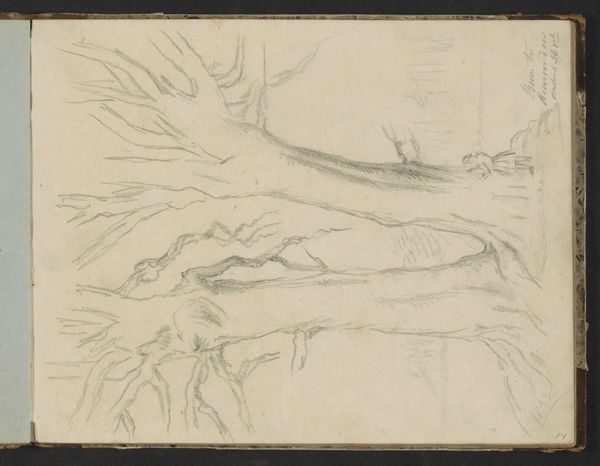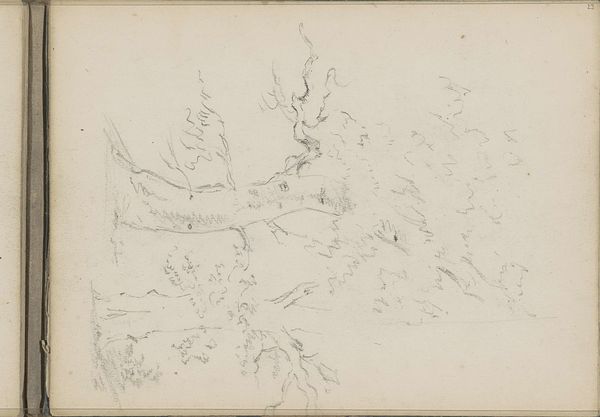
drawing, pencil
#
drawing
#
dog
#
landscape
#
figuration
#
pencil
Dimensions: height 142 mm, width 218 mm
Copyright: Rijks Museum: Open Domain
Editor: This is Willem Cornelis Rip’s drawing, “Boomstam en een liggende en zittende hond,” made with pencil sometime between 1874 and 1875. It's interesting to see how loosely the artist sketched the dogs compared to the denser shading of the tree trunk. What catches your eye in this piece? Curator: I’m drawn to the immediate evidence of the artist’s hand – the very specific act of applying graphite to paper. Rip isn’t necessarily creating an illusionistic landscape here. Rather, he is exploring the capabilities of his materials. How can a pencil evoke the textures of bark or fur, through the manipulation of pressure and mark-making? We should also consider the role of readily available, relatively inexpensive materials like paper and pencil in the broader context of art production and accessibility. Was this a study? Or was the accessibility of this method of reproduction the point? Editor: That's a perspective I hadn't considered. Focusing on the material aspect, it feels like he was less concerned with a polished final product, and more interested in the raw process. Curator: Exactly. Consider the contrast between the sketch's informality and the labor it implies. Pencil sketches often represent a departure from the conventions of the academy and open doors to explorations outside formal artistic spaces. Was he trained? How did his social class affect his production capabilities? The apparent immediacy can obscure the very real labour involved. Editor: So, you're saying it isn't just a drawing of a tree trunk and dogs but a document of artistic exploration and labour? Curator: Precisely. Thinking about it that way opens up a new layer of meaning. And we also need to ask what was consumed by whom, or perhaps who *could* consume works such as these? Editor: I see your point! Thinking about art in terms of materials, process and even consumption changes everything. Thanks for showing me how to analyze it differently. Curator: My pleasure! Materiality and social context often unlock new insights.
Comments
No comments
Be the first to comment and join the conversation on the ultimate creative platform.
